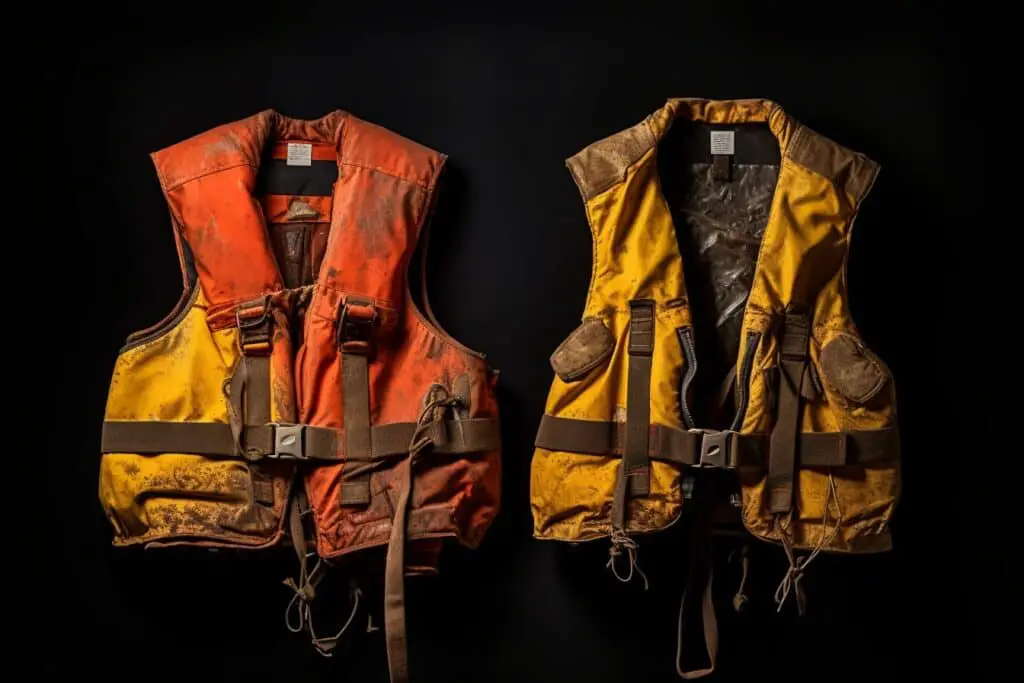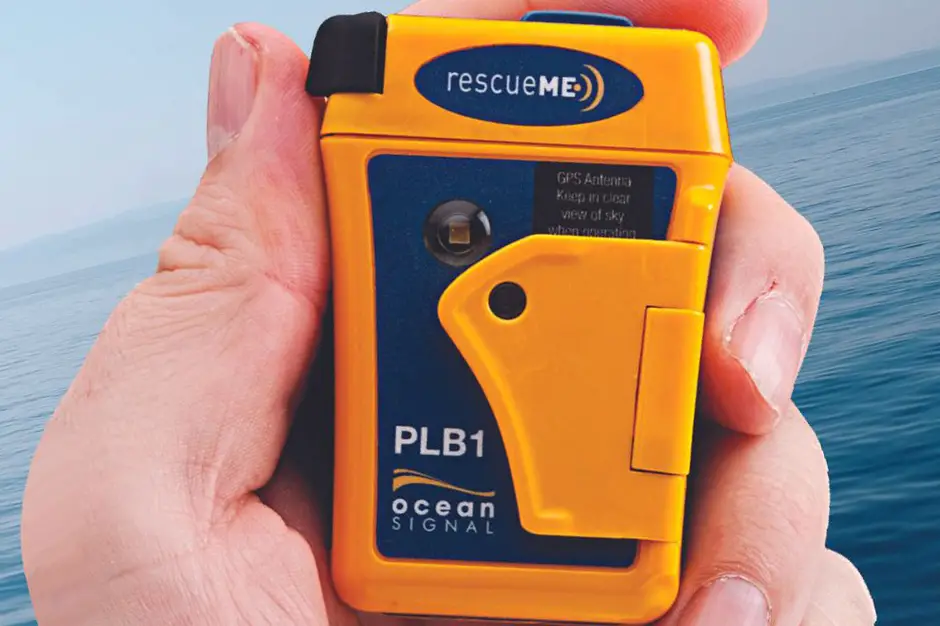When it comes to enjoying your favorite watersports, safety should always be at the forefront of your mind. One essential piece of equipment that can offer you peace of mind and keep you afloat is a personal flotation device (PFD), commonly known as a life jacket. But like any gear, life jackets don’t last forever, and knowing when they’re past their prime is crucial in ensuring your safety out on the water.
In this article, we’ll guide you through the process of determining if your life jacket has expired and provide tips on how to maintain it for optimal performance.
You might be wondering how long a typical life jacket lasts or what signs to look for that indicate it’s time for an upgrade. Don’t worry; we’ve got you covered! We’ll discuss different types of PFDs and their expected lifespans, as well as how to inspect them for damage and test their buoyancy.
Additionally, we’ll delve into CO2 cartridge evaluation for inflatable PFDs and share advice on proper maintenance and care to prolong the life of your trusty flotation device.
So grab your life jacket, follow along, and let’s make sure you stay safe during all your aquatic adventures!

Life Jacket Lifespan
You might be wondering how long a life jacket can actually last, and it’s important to know the answer for your safety during water activities. Life jackets expire depending on their type and usage: foam life jackets typically have a lifespan of 10 years for leisure purposes, while inflatable life jacket lifespan is around 5—8 years depending on its usage. The carbon dioxide cartridge may have a use by date depending on the manufacturer.
The lifespan of commercial use PFDs is shorter and must be replaced more frequently. Factors such as wear and tear or visible signs of damage may also cause you to retire your life jacket earlier than expected.
When it comes to regular wear, foam life jackets tend to show signs of aging more quickly than inflatable ones because they are susceptible to tears, abrasions, and UV damage. In contrast, inflatable life jackets require maintenance and proper inspection of their CO2 cartridges for correct weight or any possible damages.
It’s crucial that you regularly check both types of life jackets for any visible signs indicating that they should be replaced – this includes loss of buoyancy, damaged buckles or straps, faded materials, or expired air cartridges in case of inflatable PFDs.

Inspecting for Damage
Now, let’s take a look at inspecting your PFD for any signs of damage. It’s crucial to examine your life jacket before each use and at regular intervals to ensure it hasn’t reached its expiry date or sustained damage that could compromise its effectiveness as a flotation device.
Begin by visually inspecting the life jacket for any rips, tears, abrasions, or fraying in the fabric or straps. Check the buckles and strap webbing for signs of wear and tear or damage that could affect their ability to secure the PFD properly.
Pay close attention to the buoyancy of your life jacket during these inspections. If you notice that it struggles to keep your head and chin out of water when you test it, this may indicate a loss of buoyancy – a clear sign that it’s time to replace your PFD.
Additionally, if you have an inflatable life jacket, check the CO2 cartridge for an expiration date and ensure it isn’t empty or damaged (such as with rust).
Always remember that maintaining your safety while engaging in water activities depends on having a reliable and functional flotation device – so don’t hesitate to replace yours if there are any doubts about its condition.
Buoyancy Testing
Imagine yourself floating effortlessly in the water, confident that your PFD is doing its job and keeping you safe – that’s the result of proper buoyancy testing.
To perform buoyancy testing on your life jacket, start by donning the PFD and entering a swimming pool or calm waters. The life jacket should keep your head above water and not move around or rise above your shoulders when properly fitted. If it fails to do so, it may be expired or damaged, compromising your safety.
For an inflatable PFD, ensure it’s been inflated through the oral tube valve before conducting buoyancy testing. For foam-filled PFDs, be aware that their natural buoyancy can deteriorate over time due to wear and tear or environmental factors such as UV damage. Keep these considerations in mind while performing a test:

- Float with ease: Your life jacket should enable you to float effortlessly.
- Check for signs of wear: Inspect the straps for fraying or weakening before each use.
- Ensure expiration date compliance: Check with the manufacturers web site and or check with your local approved test centre.
Remember that regular inspection and maintenance are crucial for ensuring continued safety while using any type of life jacket.
CO2 Cartridge Evaluation
It’s essential to assess your PFD’s CO2 cartridge regularly, as this crucial component plays a significant role in keeping you safe and secure during water activities.
When performing a CO2 cartridge evaluation, start by checking if there is an expiry date on the carbon dioxide tank itself; these dates are typically printed directly on the cartridge.
Also there is a gross weight engraved on the Co2. Weigh the bottle and if the Co2 is 1—2 grams above or below the Gross weight and no rust is present. Then you can be assured it’s ok to re-install the Co2 into the lifejacket. Inflatable PFDs rely on these cartridges to provide buoyancy when needed, so it’s vital to replace them before their recommended tank replacement date. Additionally, inspect the cartridge for any signs of damage or wear, such as rust which could damage your lifejacket.
 |  |
To ensure that your life jacket is ready for use at all times, make it a habit to conduct regular CO2 cartridge evaluations alongside other maintenance tasks like checking straps and testing buoyancy.
Life vests are designed with your safety in mind, but they can only be effective if properly maintained and used correctly. By staying vigilant about the condition of your inflatable PFDs and replacing expired or damaged cartridges when necessary, you’ll be better prepared to enjoy your favorite water activities while knowing that you’re well protected from potential risks.

What Are the Signs That Indicate a Life Jacket Has Expired?
Life jackets have an expiration date, indicating when they should no longer be considered effective. Signs of an expired life jacket may include faded colors, worn straps, or a brittle texture. It’s crucial to regularly check the life jackets expiration date and replace them as needed to ensure proper safety on the water.
Proper Maintenance and Care
Taking good care of your PFDs and practicing proper maintenance can go a long way in ensuring they’re always ready to keep you safe during your water adventures.
When it comes to care routines for your PFDs, always rinse them thoroughly with fresh water after each use to remove salt, chlorine, or other contaminants that may affect their performance over time. Additionally, avoid exposing them to direct sunlight for prolonged periods when not in use; doing so can cause damage to the material which could compromise their buoyancy.
Store your life jackets in a cool, dry place away from chemicals that might cause deterioration. With proper maintenance and care habits in place, you’ll be able to spot potential issues with an expired PFD before they become critical safety concerns – keeping you safer out on the water.





Leave a Reply